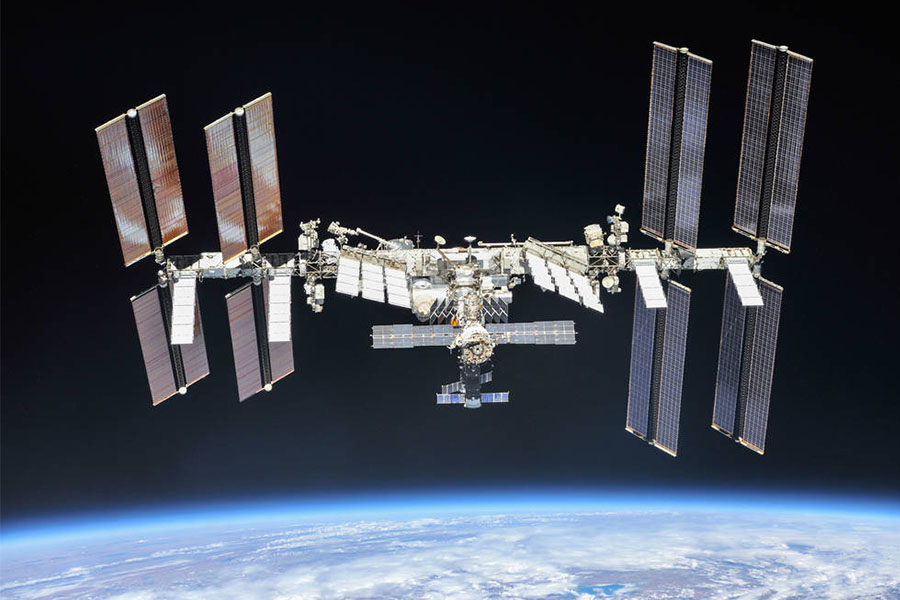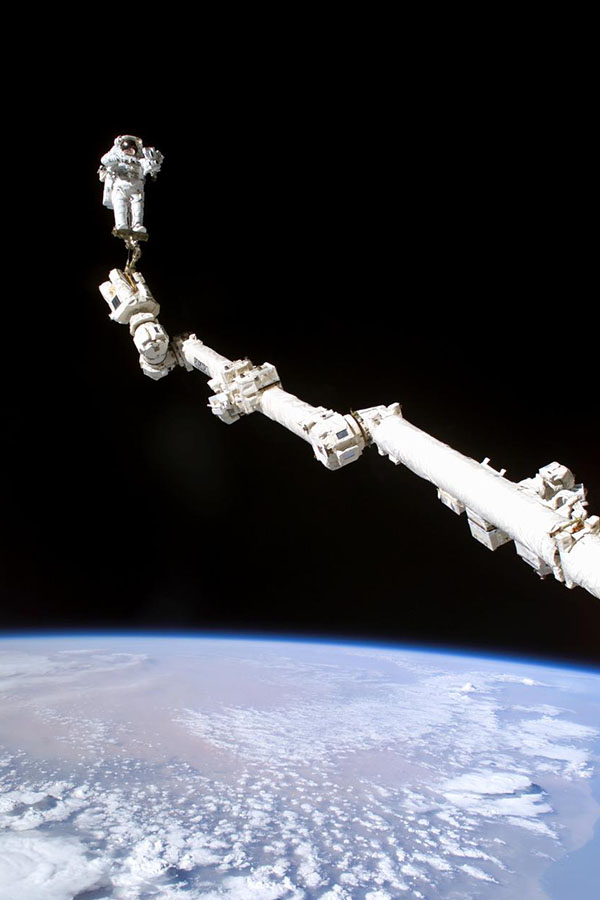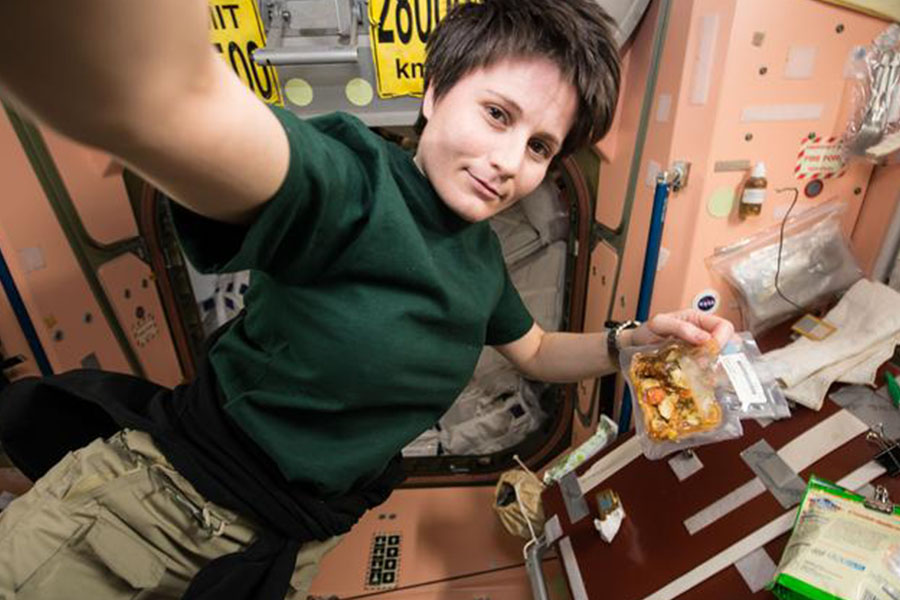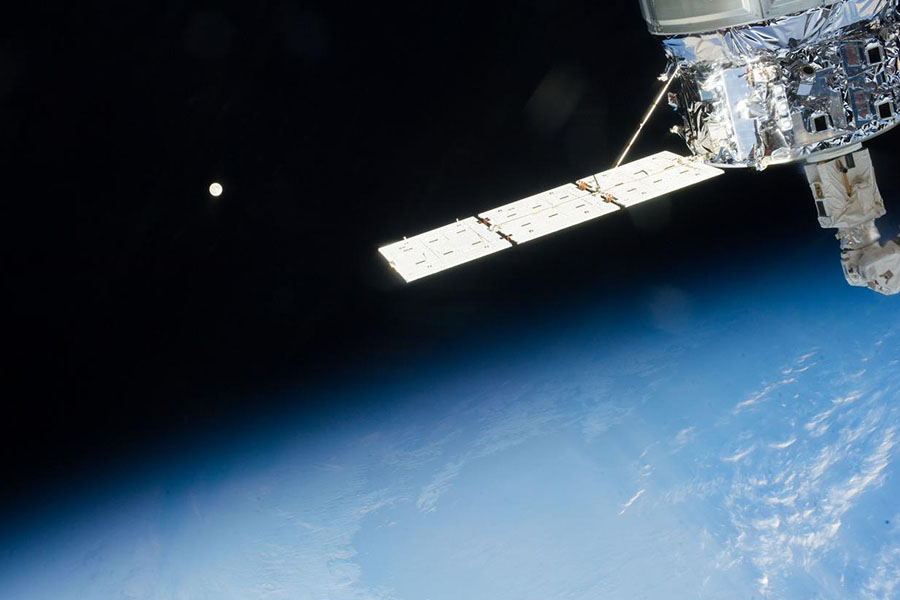When Can I See the International Space Station When Can I See the International Space Station Again
Kennedy Space Centre Visitor Circuitous Blog
The Payload Blog
Payload Blog
The 20 Virtually Frequently Asked Questions about the International Space Station
Published on Oct 23, 2020
by Alicia
As we gloat the 20th anniversary of humans living and working in infinite aboard the International Space Station, you may ask, why? Why would humankind live and work in space? President Ronald Reagan answered this question best:
"We can follow our dreams to distant stars, living and working in space for peaceful, economical, and scientific gain. … A space station will permit breakthrough leaps in our inquiry in science, communications, in metals, and in lifesaving medicines which could exist manufactured only in infinite. We want our friends to help the states see these challenges and share in their benefits."
Keep reading beneath to see the answers to more than of the almost ofttimes asked questions about this accomplishment in scientific discipline and international cooperation.
-
What is the International Infinite Station?
The International Infinite Station (ISS) is Earth's just microgravity laboratory that has allowed more than 3,600 researchers in 106 countries to carry more than two,500 experiments – and the inquiry continues. The space station is a symbol of international cooperation that has benefited life back on World economically, technologically, scientifically and educationally.
-
Can I see the ISS from Earth?
At dawn or dusk yous'll be able to see the infinite station with your blank optics as the 3rd brightest object in the sky. It will besides exist moving across the sky, similar to an airplane, merely without flashing lights. Runway where the ISS is right now using NASA's Spot The Station tool.
-
What does the ISS expect similar?
This photo of the ISS was taken in 2018 by Trek 56 crew members from a Soyuz spacecraft undocking. Credit: NASA/Roscosmos The ISS is synthetic of many continued modules called "nodes" connecting the station together. The solar arrays are connected to the station with a long truss, which controls the space station'south temperature. The ISS also has robotic artillery mounted outside the station.
-
How far abroad is the ISS?
The infinite station orbits Globe at an average altitude of 227 nautical miles/420 kilometers higher up Earth.
-
How big is the ISS?
The ISS measures 357 feet or 108 meters from end-to-end, which is about the size of an American football field. The space station has a mass of nearly 1 million pounds. When it comes to living in infinite, the ISS is larger than a six-bedroom house.
-
How fast does the ISS travel?
The ISS travels at most 17,500 miles/28,000 kilometers per hour. At this speed, the ISS orbits the Earth every 90 minutes, which gives the crew 16 sunrises and sunsets every day. Since humans have been living and working on the space station, it has orbited Earth tens of thousands of times.
-
How old is the ISS? How long has information technology been operational?
Plans for the ISS first began 36 years ago when President Ronald Reagan directed NASA to develop a permanently internationally crewed space station. Over 20 years ago, in 1998, the first modules of the ISS were launched into space. At present in November 2020, the ISS will celebrate 20 years of humankind permanently occupying the infinite station.
-
How many countries are involved in the International Infinite Station?
The partnership of five space agencies representing 15 countries provide for and operate the ISS. These countries include the United States, Russian federation, Canada, Japan and the participating countries of the European Infinite Bureau.
-
How was the ISS congenital?
Astronaut Stephen K. Robinson, STS-114 mission specialist, is anchored to the extended ISS's Canadarm-2 during a spacewalk to repair the Control moment Gyroscopes. Credit: NASA Constructing the ISS was a joint mission over the form of 13 years by many countries including the U.s., Russia, Japan and Europe. Different modules of the ISS were constructed on Earth by thousands of engineers and launched by Russian federation's Proton rocket and the United States' space shuttles.
Fun Fact: Infinite shuttle Atlantis on display at Kennedy Space Center Company Complex delivered the U.S. laboratory module Destiny along with many other vital components.
-
Who is on the ISS?
As of mid-October 2020, six astronauts are aboard the ISS. Go along up to date with who is on the station at NASA ISS webpage. Iv astronauts are preparing to launch soon on a SpaceX Coiffure Dragon, including NASA astronauts Michael Hopkins, Victor Glover, Shannon Walker and JAXA astronaut Soichi Noguchi. Larn more most this launch and other upcoming launches on the launch calendar.
-
How long practice astronauts stay on the ISS?
Expedition 42 Flight Engineer Samantha Cristoforetti of the European Space Bureau (ESA) prepares her dinner. Credit: NASA The average mission length for an astronaut is six months or 182 days, but the corporeality of fourth dimension varies based on their mission.
-
Who has been on the ISS the longest?
Astronaut Scott Kelly holds the tape for the longest single spaceflight at 340 days. For the longest cumulative days in space, astronaut Peggy Whitson holds the record at a total of 665 days.
Fun Fact: Astronaut Scott Kelly is one of the 2020 Astronaut Hall of Fame inductees. Visit the Astronaut Hall of Fame to larn more than almost this prestigious honour.
-
How many people have been on the ISS?
A total of 240 astronauts from 19 different countries have been aboard the ISS.
-
How many people can be on the ISS at ane time?
The ISS is designed to support a crew of six people at one fourth dimension.
-
What do astronauts do on the ISS?
An astronaut'southward primary job while on the space station is to conduct scientific experiments and maintain the space station. When not working, astronauts practise a lot of the same things we do on Earth. Astronauts also consummate a ii-hour daily exercise program to remain fit. They eat a multifariousness of foods, although some of information technology has to be rehydrated. When astronauts are set to sleep, they stay in special sleep numberless secured to the ways of their crew quarters.
Fun Fact: The Space Shuttle Atlantis® showroom contains the ISS: Triumph of Technology section that contains existent space-flown artifacts from the ISS.
-
How practise astronauts use the restroom on the ISS?
-
How many spacewalks have been done on the ISS?
In order to maintain and upgrade the ISS, over 227 spacewalks have been completed.
-
How many experiments have been conducted?
More than 2,800 experiments have been conducted so far.
Fun Fact: Part of one such experiment was conducted here at the company complex'southward Mars Base ane phytology lab, to larn how microgravity affected the growth of tomatoes.
-
What research is being done on the ISS?
Over the years, many activities and inquiry projects take been completed. For instance, advances have been fabricated in saliva testing to detect active viruses which allows for faster, less-invasive testing. Additionally, over 500 microgravity poly peptide crystal-growth investigations have been conducted. This research helps find improve treatments for diseases such as cancer and muscular dystrophy.
-
How volition the ISS help united states of america get to the Moon again?
Distant view of the Moon over Earth. Credit: NASA/Expedition 37 crew The ever-growing body of research that has been conducted on the ISS has given many insights into the needs of future lunar explorers. NASA's adjacent step for infinite exploration is to set up a permanent base for humans to live on the Moon – the long duration human spaceflight aboard the ISS has provided many answers on how that volition happen. The ISS has led to advances in spacesuit design, experience on spacewalks and the creation of potent meteorite protection.
Still have more questions? Visit Kennedy Infinite Center Company Circuitous to explore the story of NASA, from the first rocket launches to the Apollo programme to the International Space Station. Larn about the pioneers of infinite exploration at Heroes & Legends who proved that humans could exist in infinite, before humankind ever considered living among the stars. Visit Space Shuttle Atlantis® to see how the Infinite Shuttle Plan brought new modules, supplies and astronauts to the International Space Station.
VIEW TICKETS
Contempo Posts
Search
Archive
Categories
Tag Cloud
Source: https://www.kennedyspacecenter.com/blog/the-20-most-frequently-asked-questions-about-the-international-space-station





0 Response to "When Can I See the International Space Station When Can I See the International Space Station Again"
Enregistrer un commentaire